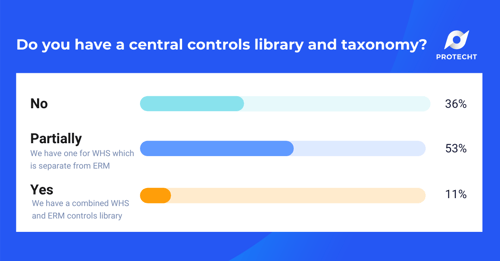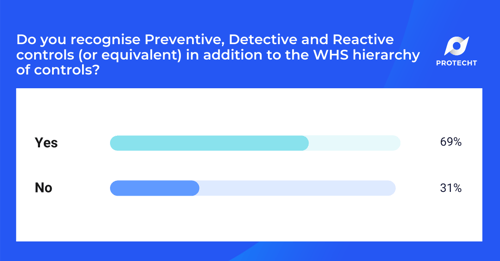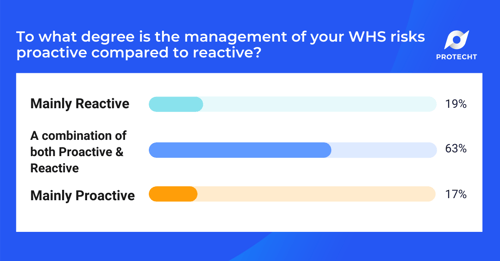In this blog, David Tattam summarised his insights of the second live session "Understanding WHS Treatment Methods and Controls" in the webinar series "A Deep Dive into Workplace Health and Safety".
In our previous webinar, Michael Martin from C- Suite Safety Solutions and I discussed:
- Risk Taxonomies
- WHS Risk Descriptions
- ISO 45001
- The importance of incorporating WHS Risk Management into the ERM Framework.
The second webinar of the series focuses on understanding WHS Treatment Methods and Controls.
Risk Treatment & Controls
ISO 3100 defines a Control as 'any measure or action that modifies or regulates risk'.
In this week's webinar, we explored how you can move a risk from an inherent to a residual risk. Using Bow Tie Analysis we demonstrated the importance of focusing on preventative actions and the importance of having a controls taxonomy in place.
Around 500 health and safety professionals participated in the session and voted in the polls. In our first poll, I asked 'Do you have a Central Controls Library and Taxonomy?'' Here are the results:

- About a third of participants have no taxonomy at all.
- 53% partially have one for WHS (which is separate from ERM).
- 11% have both combined WHS and ERM.
My personal view and Protecht's view is that we want to achieve a combined taxonomy for both ERM and WHS.
Types & Nature of Controls
In the webinar, we explored the treatment methods of WHS risks and our appetite for these risks, within WHS legislation. We looked at the hierarchy of controls and the control types.
In our second poll, I asked 'Do you recognise Preventive, Detective and Reactive Controls in addition to the WHS hierarchy of controls?' Here are the results:

- About 2/3 of participants do recognise these controls in addition to the WHS hierarchy of controls
- About 1/3 of participants do not
I strongly encourage you all (if you are not already) to start integrating WHS with your ERM Framework and to tag your controls under both the WHS hierarchy of controls and whether it is Preventative, Detective and Reactive.
How Controls Modify WHS Risk
Now that we have a complete picture of our risks, we looked at the control types likelihood and impact and the difference between proactive risk prevention and reactive firefighting.
Using our Bow Tie Analysis we highlighted how important it is to trace our risks back to their root cause and how we need to have effective, efficient, and balanced controls.
In our final poll, I asked 'to what degree is the management of your WHS is proactive compared to reactive?'

- 19% mainly reactive
- Two thirds, a combination of both
- 17% mainly proactive.
I believe that the Holy Grail is Mainly Proactive. You will have a much more effective and efficient control framework if you're in the 17% compared to the 19%.
One of the challenges we have with controls are the unintended impacts. ISO 1300 in its definition of a control, adds a note' Controls may not always exert the intended or assumed modifying effect.'
We need to ask ourselves does the control itself add additional risk into the situation? With the 'safety net effect' the reduction of impact may increase the likelihood. When you add a control, recognise any additional risks created by that control, and ensure that you have mitigated them as well.
Determining the optimal treatment method
Taking the above into account, how do we determine the optimal treatment method?
WHS Controls reduce the likelihood of the risk occurring or reduce the potential impact if that risk was to occur. We need to take into account WHS Legislation and balance cost and benefit. The cost of a control must not be greater than the reduction in risk.
Controls are there to manage the effect of uncertainty on objectives. There is a direct link between controls and our desired outcomes. I encourage you to help your staff to understand this linkage and to always look for the optimal set of controls.
I also strongly encourage you to really think about how you can maximize the integration of WHS with ERM. We will continue to explore this integration in our upcoming Webinars, our next webinar will focus on Risk Management Frameworks for WHS.
To access the recording of the previous webinars and to save your spot for the upcoming Webinars click the image below.

